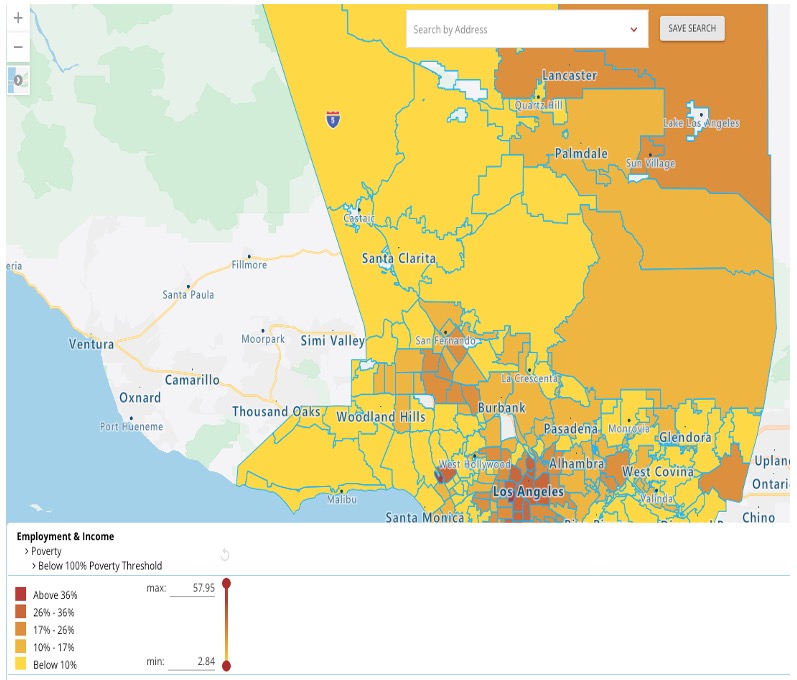CommentsPLANNING WATCH - If you live, work in, or pass through Hollywood, Downtown LA, Koreatown, Warner Center, or other LA neighborhood with new, expensive, high-rise apartment buildings, you can witness eight trends:
- Transit ridership is declining, and traffic congestion is increasing.
- Low income residents are moving to cheaper housing markets.
- Rents are rising.
- Infrastructure is failing, typically burst water mains and electric grid black outs.
- Public services are strapped.
- As neighborhoods gentrify, restaurants and stores change to appeal to new, wealthier residents.
- Rent-Stabilized (RSO) apartments disappear through legal Ellis Act evictions, landlords who make cash-for-key payments to tenants so they will “voluntarily” leave, and slumlords who let their rental units become so unlivable that tenants self-evict.
- As homelessness increase, local residents complain to City Council Offices, which then direct the LAPD to uproot local encampments.
Despite this overwhelming evidence, some academics still claim that new market rate apartments reduce rents and, therefore, solve the housing crisis. These luminaries argue, as in UCLA’s Lewis Center’s recent in-house publication, The Effect of Market Rate Development on Neighborhood Rents, that private developers solve the worsening housing crisis when they build expensive apartment buildings. City Halls only need to revoke the pesky regulations that get in their way.

If these sages were to leave the Westwood campus, this is what their lying eyes would discover in the rest of Los Angeles. For that matter, if they preferred to stay in their offices, they could easily discover a vast amount of on-line information that debunks their “build, baby, build” belief that unrestrained real estate investment solves the housing crisis. This on-line information includes:
- The A. Development Map is regularly updated and shows exactly which Los Angeles neighborhoods are experiencing a real estate boom, mostly upscale apartments and commercial buildings.
- Urbanize LA offers neighborhood and project level breakdowns of all new real estate projects in the entire metropolitan area.
- USC’s Neighborhood Data for Social Change maps the density of homeless people in the entire Los Angeles metropolitan area. Big surprise that the neighborhoods with the most new and expensive apartments – like DTLA, Koreatown, and Hollywood -- also have high rates of homelessness.
- The same USC database also maps another reliable predictor of the housing crisis, poverty, at the neighborhood and census tract levels.

- The City of Los Angeles Redistricting Commission also prepared neighborhood level data on population change, as well as changes for specific ethnic, racial, and age groups. For example, East Hollywood, home of many new real estate projects, lost 10 percent of its population between 2010 to 2020, mostly Latinos who moved away (i.e., priced out). In contrast, DTLA experienced a population gain of 57 percent between 2010 and 2020, mostly new, affluent, white tenants.
With so much contrary evidence, as well as easily accessible on-line data, why do these dead-enders still contend that the solution to the housing crisis is more private sector apartments assisted by the deregulation of zoning, building, and environmental laws. In their own words: “The neighborhood-level benefits of market-rate development are promising and indicate an important role for both market and non-market solutions to the housing crisis.”
Why, indeed? The reasons boil down to the role of money in the battle of ideas over city planning policies. Despite the many obituaries for neo-liberal/trickle-down/supply-side economic policies, some academic planners never got the memo. They are thriving because of the outsized role of real estate developers in enclaves like UCLA’s Lewis Center. Expressed bluntly, he who pays the piper picks the tune, which means that traditional liberal city planners, plus left-wing planners, now face an uphill battle despite the obvious failure of trickle-down housing policies.
Reason 1: Follow the money. UCLA’s Lewis Center began in 1989 with a $5 million donation from Ralph Lewis, a successful private sector developer whose construction firm built thousands of homes in California, Nevada, and Utah.
Reason 2: Who are the Directors? The Lewis Center’s Board of Directors is a who’s who of public and private officials, and, like its founder, includes several real estate developers.
Reason 3: Who are the staff people? The Lewis Center’s Housing Initiatives Housing Manager is a former employee of Abundant Housing, LA’s YIMBY organization. Abundant Housing partners with and is partially funded by California Yimby, which investigative reporter Patrick McDonald has identified as a Big Tech lobbying organization committed to trickle-down housing policies. While this Reaganesque approach has succeeded in building luxury housing, it has, according to McDonald, totally failed in building low priced housing.
Reason 4: Who gets funding? The Lewis Center is a home to UCLA faculty and non-tenured advocates who champion free market housing policies. It offers them a platform to directly spread their ideas through its own publications and forums.
As long as the money flows, there will be loyalists who claim that by green-lighting the construction of expensive apartments cities can rely on private developers to build their way out of the worsening housing crisis. As for the growing number of homeless encampments that their policies create, cities like LA allocate more than half of their discretionary budget to policing. By turning to the LAPD, the pols ensure that the consequences of their folly temporarily disappears from view.
(Dick Platkin is a former Los Angeles city planner who reports on local planning issues for CityWatchLA. He serves on the boards of United Neighborhoods for Los Angeles (UN4LA) and the Greater Fairfax Residents Association. Previous Planning Watch columns are available at the CityWatchLA archives. Please send comments and corrections to [email protected].)













